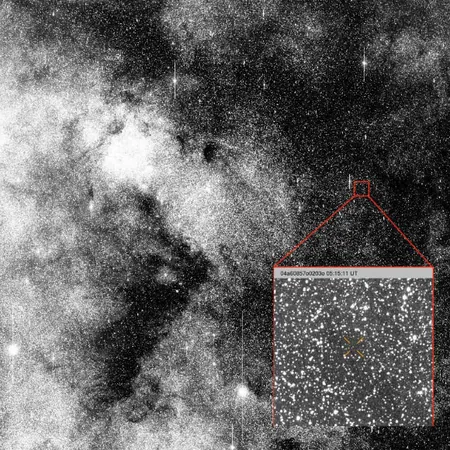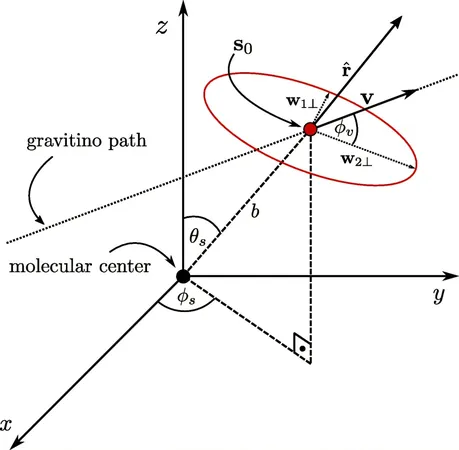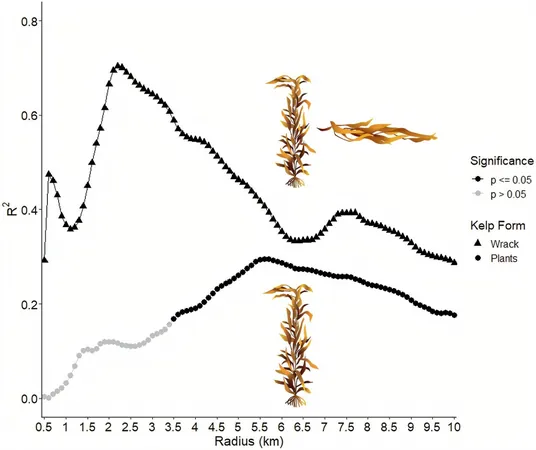
Astronomers Make Groundbreaking Discovery with Interstellar Comet 3I/ATLAS
2025-07-04
Author: Jacques
An Exciting Interstellar Encounter
In a remarkable find, astronomers have tracked the interstellar comet 3I/ATLAS, marking only the third time such a celestial body has been spotted. Following the mysterious 1I/'Oumuamua in 2017 and the striking 2I/Borisov in 2019, this new comet offers insights from beyond our solar system.
A Journey Through Space
Currently zooming through the cosmos at an astounding speed of approximately 60 kilometers per second (37 miles per second), 3I/ATLAS is situated about 670 million kilometers (420 million miles) from the Sun. It is on a trajectory that will bring it close to Mars in October 2025.
No Threat to Earth!
Fear not! 3I/ATLAS is set to pass no closer than 240 million kilometers (150 million miles) from Earth—over 1.5 times the distance between Earth and the Sun—ensuring our safety.
A Spectacle in Space
As it nears the Sun, 3I/ATLAS could heat up, leading to sublimation. This process transforms its frozen gases into vapor, igniting a glowing coma and tail that could make it a spectacular sight.
Disappearing Act Until 2025
However, astronomers warn that when it reaches its closest point to Earth, it will be hidden behind the Sun. The good news? It is expected to reemerge by early December 2025, allowing astronomers another chance to study this interstellar marvel.
Experts Weigh In
Professor John Tonry from the University of Hawai’i expressed his excitement: Spotting a possible interstellar object is incredibly rare, and it’s thrilling that our Asteroid Terrestrial-impact Last Alert System (ATLAS) telescope caught it. The excitement doesn’t end there; he noted that while many interstellar objects pass through our Solar System annually, 3I/ATLAS is the largest recorded yet.
Monitoring the Cosmic Visitor
Astronomers across Hawai’i, Chile, and various locations worldwide are closely observing 3I/ATLAS. They are keen to unlock the secrets of its composition and behavior.
A Glimpse Into the Unknown
According to ESA astronomers, interstellar objects like 3I/ATLAS are remarkable due to their alien nature. Unlike planets and moons formed from our Solar System, these celestial wanderers originate from distant planetary systems, carrying tantalizing clues about worlds far beyond our reach.
Connecting Humanity to the Universe
While a human visit to another solar system may still be millennia away, comets like 3I/ATLAS bring us a step closer to understanding the cosmos. They serve as tangible connections to materials formed in environments vastly different from our own, offering us a unique opportunity to connect with the universe on a grand scale.









 Brasil (PT)
Brasil (PT)
 Canada (EN)
Canada (EN)
 Chile (ES)
Chile (ES)
 Česko (CS)
Česko (CS)
 대한민국 (KO)
대한민국 (KO)
 España (ES)
España (ES)
 France (FR)
France (FR)
 Hong Kong (EN)
Hong Kong (EN)
 Italia (IT)
Italia (IT)
 日本 (JA)
日本 (JA)
 Magyarország (HU)
Magyarország (HU)
 Norge (NO)
Norge (NO)
 Polska (PL)
Polska (PL)
 Schweiz (DE)
Schweiz (DE)
 Singapore (EN)
Singapore (EN)
 Sverige (SV)
Sverige (SV)
 Suomi (FI)
Suomi (FI)
 Türkiye (TR)
Türkiye (TR)
 الإمارات العربية المتحدة (AR)
الإمارات العربية المتحدة (AR)